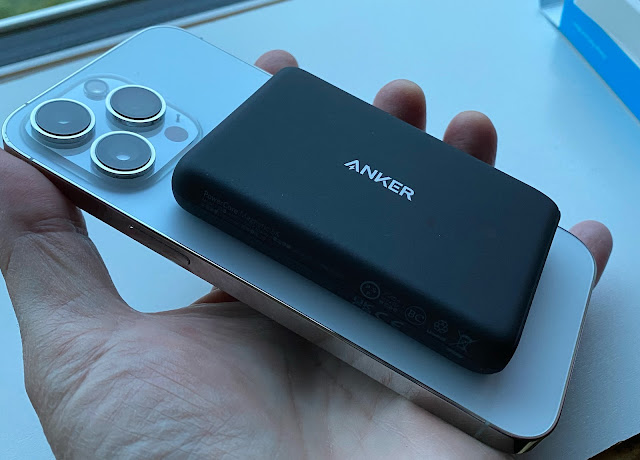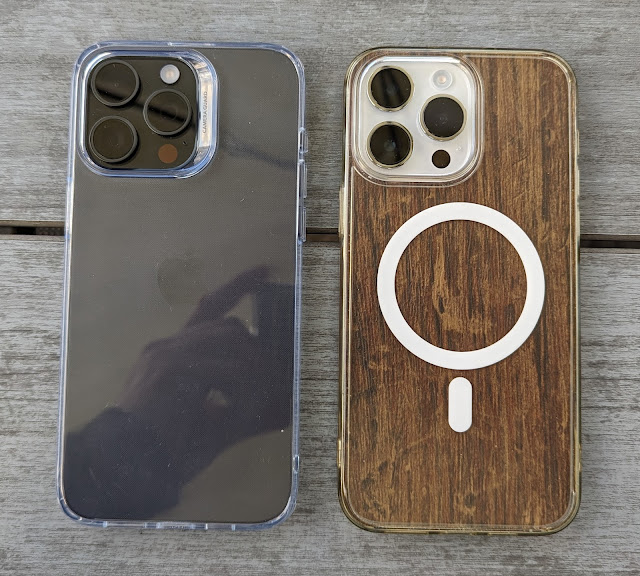Review: Anker 521 Magnetic Power Bank
I'm a sucker for gadget elegance. And the thought that a lump of tech, with no wires, could be clamped to the back of my smartphone and start recharging it, is elegance personified. As with Apple's (still expensive) original version of the idea and as with Voltme's version, there are caveats, but I think they're minor in the grand scheme of things.
Anker is a tried and tested name in tech power, of course, and I've bought various things from them over the years, all of which are still in use. The Anker 521, also known, somewhat confusingly, as the PowerCore Magnetic 5K, is a small and tough rubberised brick, with an internal 5000mAh Li-Ion battery and a MagSafe (/Qi 2) ring of aligned magnets on one side.
Clamp the 521 onto the back of a MagSafe (/Qi 2) compatible phone and press the button to start the charging and you're done. Admittedly, the Qi wireless charging is only at a stately 5W, but then even Apple's official (and much more expensive) version only manages 7.5W, and even that only after a firmware upgrade of the accessory.
The point of such an accessory isn't speed though - by clamping onto the phone back in a minimalist way, you can still use the device. So you're out and about and notice that you're running low on power, say at 20%. Snap on the Anker 521 with a satisfying 'clack', push the button and then just carry on using your phone for another hour. Or two, or three, after which the phone battery will be up to 40%, say. You'll have gained capacity even though you've been using the phone the whole time.
It's a lovely concept. No wires, no hassle. Just keep this (or the Apple or Volume competitor) fully charged in a pocket, ready for such an emergency. In fact, the last few times I've been into London (for me, a 90 minute journey, end to end) I've used a magnetic power bank the whole of the way home with onlookers often not even realising that my phone is charging.
The photo above shows the power bank on the back of my naked iPhone, but it works almost as well with a TPU case in place (I normally have the Ringke MagSafe on, which ensures that the perfect alignment stays err.. perfect.)
It's true that you do have to press the button to activate the Qi coils, while on the Apple version their hardware can activate this automatically, but paying three or four times as much, for 60% the capacity, just to save pressing a button, is just crazy. The Anker wins every time.
The Anker 521 is a little thicker than the Apple version, but it's commensurate with the capacity increase and isn't an issue in the hand, at least on my iPhone 14 Pro Max.
Of course, a wire is needed to recharge the Anker 521, in this case a USB Type C to C, and any suitable source can be used since it 'only' accepts 11W, so will take at least a couple of hours to charge fully. The usual strip of little LEDs show the current state and whether charging is in progress.
You can also output via the same USB Type C port and using the same cable, to charge something up in traditional wired fashion. In fact, you can charge a phone wirelessly (at 5W) AND also something with a wire (perhaps your headphones case?), though the wired output is then down to 5W.
I love the diminutive size and weight (130g) - it's small enough that you really can forget about it most of the time. In the pocket and, when needed, snapped to a phone back.
I'd been monitoring the price of the Anker 521 and couldn't resist when it dipped below £20 in the Uk. As I write this, it's still at £19.99, but snap it up quick as it's more usually at £30 or £40.







Comments